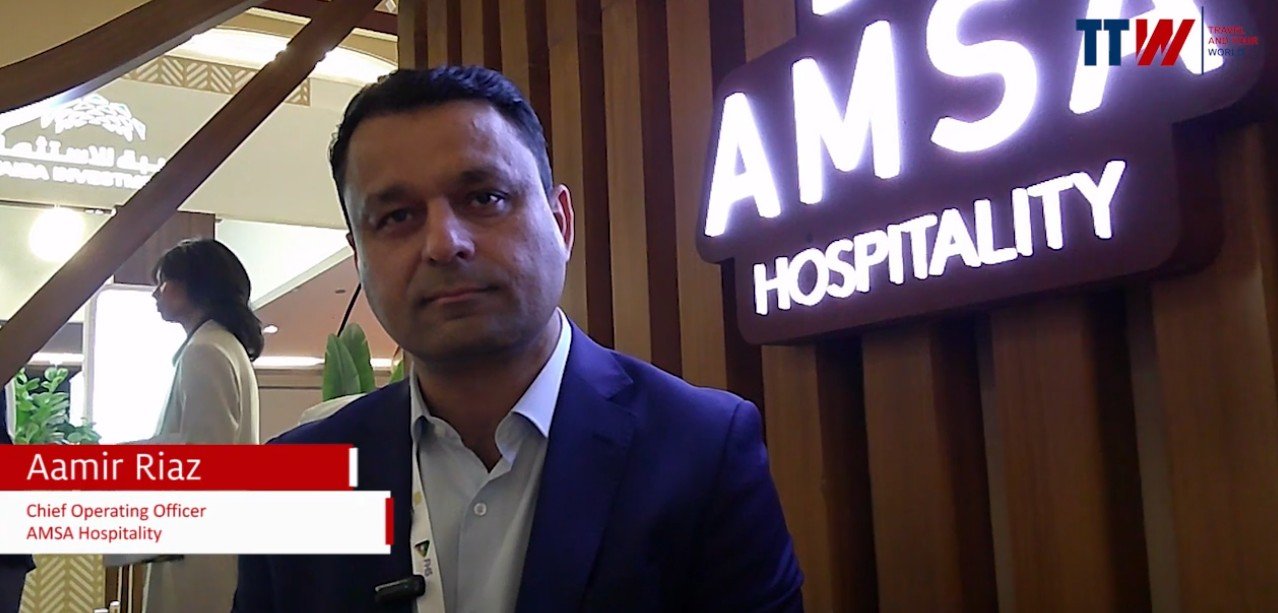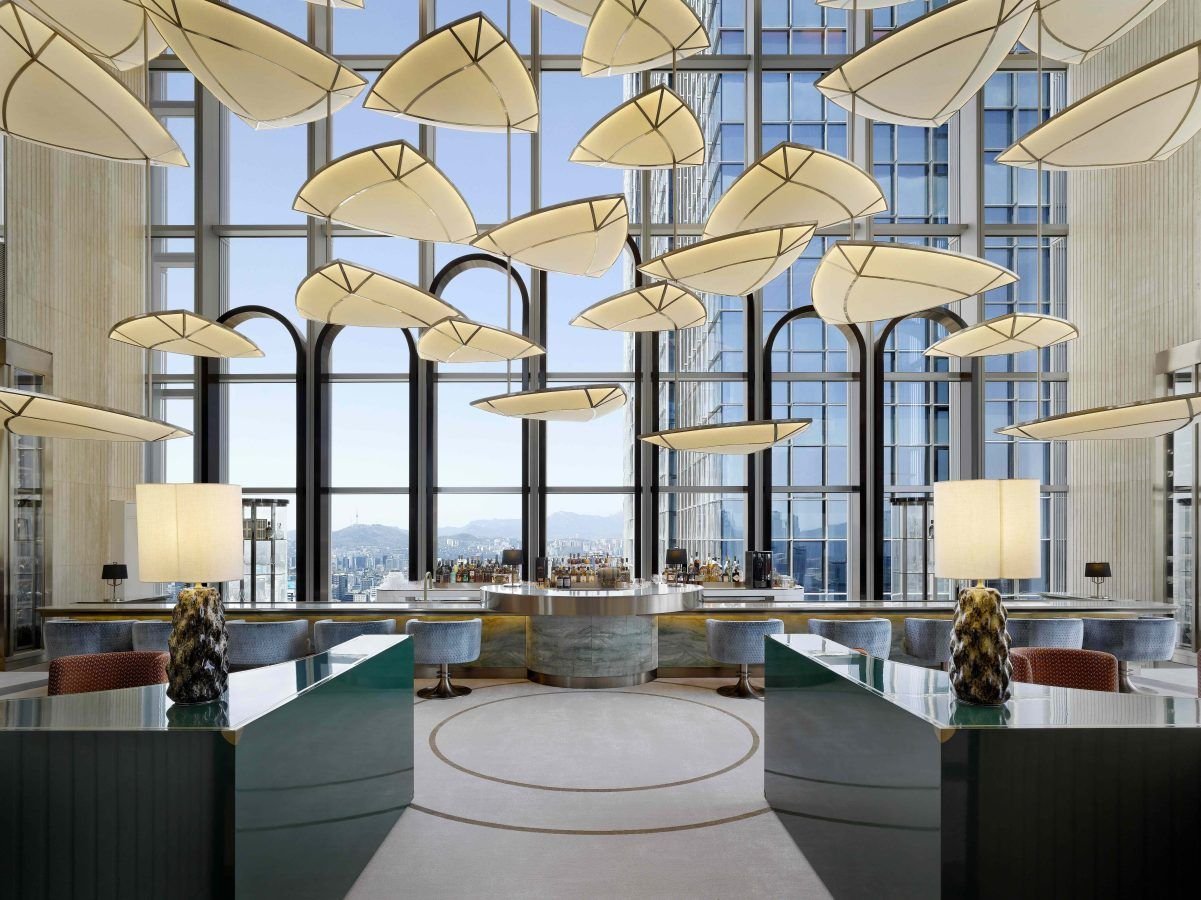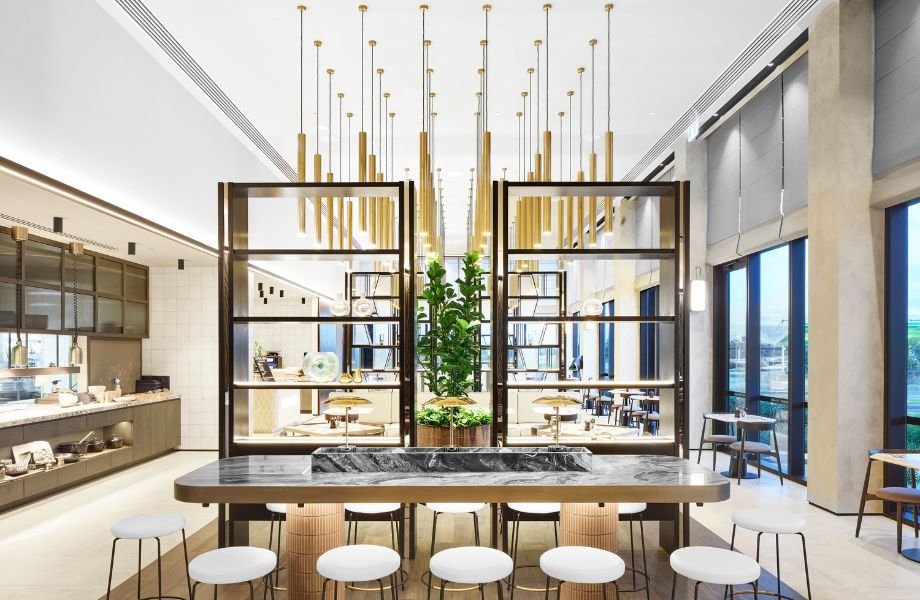Hotels & Accommodations
Aamir Riaz, COO of AMSA Hospitality, Discusses Future Business Hotel Strategies and Expansion Plans in Saudi Arabia

Sunday, July 27, 2025
In an exclusive interview at the Future Hospitality Summit 2025 in Saudi Arabia, Aamir Riaz, the Chief Operating Officer (COO) of AMSA Hospitality, shared exciting developments for the hospitality sector. With Saudi Arabia rapidly transforming into a major business and tourism hub, AMSA Hospitality is preparing to cater to both domestic and international business travelers. Here’s a deep dive into Riaz’s vision for the future of business hotels and the challenges his company is navigating in the growing market.
Expansion Plans for AMSA Hospitality
AMSA Hospitality is setting the stage for rapid growth in the next two years, with seven new hotel projects in the pipeline. According to Riaz, these projects are focused on secondary cities in Saudi Arabia, a strategy that the company believes will drive business success. “Secondary cities are becoming a priority for us because they offer a great opportunity to tap into growing business hubs outside of the capital,” said Riaz.
The new hotels will primarily cater to business travelers, focusing on locations close to airports, industrial areas, and business hubs. These strategically chosen sites ensure that AMSA’s hotels are accessible to the growing number of companies operating in Saudi Arabia’s emerging industrial sectors.
Business Hotels Over Luxury Stays
AMSA’s business model is firmly rooted in the business hotel segment. While luxury hotels may appeal to leisure travelers, AMSA is focusing on mid-range hotels that offer a comfortable, practical experience for business professionals. Riaz highlighted that business travelers do not prioritize luxury but instead focus on affordability, comfort, and proximity to their business destinations.
“Our strategy has always been about delivering what our customers need,” said Riaz. He explained that AMSA’s business hotels offer sustainable amenities, efficient services, and a focus on location, making them ideal for business trips.
Challenges Faced by the Industry
Despite the potential in Saudi Arabia’s hospitality industry, Riaz acknowledged that the sector faces several challenges. One major issue is the difficulty in finding skilled staff for the growing number of hospitality projects. “The challenge is not in the market demand but in finding qualified experts in the field,” Riaz explained.
To tackle this issue, AMSA has invested in their own training programs through the AMSA Academy. This initiative is aimed at recruiting fresh graduates and training them to become proficient in the hospitality sector, which is crucial for the company’s growth strategy. By developing their own talent pool, AMSA aims to bridge the skill gap in the industry and ensure that their properties deliver top-notch service.
Market Research and Customer Feedback: The Key to Success
Riaz emphasized that the company’s strategic decisions are driven by thorough market research and customer feedback. AMSA Hospitality continuously adapts its offerings to align with market trends, ensuring that their business model remains competitive. Riaz shared that their approach is data-driven, and they rely heavily on customer feedback to refine their services.
Saudi Arabia is undergoing significant changes in its infrastructure and business environment, and Riaz believes that staying attuned to the needs of customers and the industry’s shifts is essential for AMSA’s success.
Looking Toward the Future: Business and Leisure Opportunities in Saudi Arabia
Saudi Arabia is set to host major global events, including the World Cup, which will further elevate its position as a key destination for both business and leisure travelers. Although AMSA’s primary focus is on business hotels, Riaz sees the potential for growth in the leisure segment as well. “While business travel is our main focus, we understand that the growing demand for leisure accommodations is important,” he said.
As Saudi Arabia continues to develop into a global hub for business and tourism, AMSA is well-positioned to capitalize on both markets. With projects that cater to the needs of business travelers, AMSA is paving the way for a new era of hospitality in Saudi Arabia.
Hotels & Accommodations
T+L Review: Josun Palace, Seoul

Give Us the Skinny
The Chosun Hotel, which opened in 1914, was one of Korea’s first luxury hotels. Occupying the same site is its modern reincarnation, Josun Palace, which opened quietly during the pandemic in 2021 and is now laying claim to be the best hotel in Seoul. Part of Marriott’s Luxury Collection, the hotel is housed on the middle floors of a gleaming glass-and-steel high-rise development, Centerfield Mall.
The Vibe
A large sculpture of a decaying biblical figure, Moses, by star contemporary artist Daniel Arsham in the lobby area shows that the hotel isn’t just grand, it’s on-trend too. Interiors, by Monaco-based architectural practice Humbert & Poyet, are highly Instagrammable, with Art Deco, Modernist and Korean design elements creating an eye-catching whole. The Grand Reception room on the 25th floor is one of the smartest check-in areas of any city hotel.
The Location
Conveniently located in the swanky Gangnam district, home to many of Seoul’s best restaurants, bars and shops. Gangnam is a big district, however, and the hotel is in the business precinct, with most of those happening venues still a taxi ride away rather than walking distance. Note that the hotel entrance, via a basement carpark, can be tricky to find.
The Crowd
As a prestige address, the hotel draws a mix of predominantly Korean and some international business executives alongside well-heeled, well-dressed leisure travelers, including couples and families.
The Rooms
The 254 light and airy rooms and suites are located between floors 27 to 35 of the building, offering terrific views of the sprawling Korean capital through floor-to-ceiling windows. Each is dressed in soothing neutral hues and perked up with touches of sage green, mustard, or geometric-print upholstery. Curves and rounded edges on headboards, bedside tables, armchairs, and in the marble bathroom contribute to a relaxing mood.
My open-plan Masters Suite had a corner sofa, separate dining table and work desk, and walk-in wardrobe. My favorite feature however, was the Samsung AirDresser, installed in all rooms. What looks like a fridge is actually a steam cleaner for your clothes. After a day out and about, or a night of Korean barbecue, just pop your clothes into the unit for a clean and refresh—genius!
The Food and Drink
Michelin-starred Eatanic Garden is a destination on its own. Located on the hotel’s top floor, the botanic-inspired interiors and stunning city views (couples should request window tables) are a feast for the eyes, as is chef Son Jong-won’s contemporary Korean cuisine. The tasting menu changes seasonally and each course is accompanied by an illustrated explanation card.
Also on this level is Cantonese fine-diner The Great Hong Yuan, with equally striking interiors and views. A waiter recommended a soup with bamboo shoot and “delicacy of the sea”. I made the mistake of not checking what it was: a euphemism for shark’s fin. If in doubt, ask, though note that staff speak limited English.
Breakfast in high-ceilinged Constans is a great way to start the day. The extensive buffet includes quality fruits, steaming baskets of dumplings (love the kimchi dumplings), noodles made to order and classics like eggs benedict. On weekends, breakfast is in two sittings and ends early, at 10 am (as it does every day). Meanwhile, 1914 Lounge & Bar, named in honor of the original hotel, is good for afternoon tea, cocktails and nightcaps under dramatic nine-meter-high ceilings. Be aware that a cover charge applies for window seats.
The Gym
Although I didn’t get to use the gym, I’m told that oxygen levels are regulated to help you get the most out of your workout while using state-of-the-art Technogym equipment. I wish I had more time to use the excellent steam and sauna facilities, which includes hot and cold plunge pools. The photogenic 25-meter-long swimming pool has a mirrored ceiling and more great city views.
The Service
Formal and attentive though I had difficulty ordering at The Great Hong Yuan because of the language barrier. Staff are immaculately groomed and unfailingly polite, delivering a high level of service befitting a hotel of its stature.
Would We Visit Again?
Most likely. The location is handy for restaurants and nightlife, the design is lovely, dine and drink options are strong, service is solid, and rooms are well appointed and comfortable. The in-room clothes cleaner is almost reason enough to return.
www.marriott.com; rooms from KRW570,000 per night
Images courtesy of Josun Palace.
Note:
The information in this article is accurate as of the date of publication.
We may earn an affiliate commission when you shop through links on our site.
Written By
Hotels & Accommodations
The Future of Hotels in Qld

As Queensland gears up for a decade of transformative growth—driven by international tourism, the 2032 Olympics, and major infrastructure investments—developers are facing a critical question: how to capitalise on booming hotel demand while navigating unprecedented cost pressures and supply constraints?
The answer lies in strategic thinking about the entire hotel development lifecycle, particularly focusing on furniture, fixtures, and equipment (FF&E) and the potential of offshore fitout manufacturing to unlock value and mitigate risk.
Rising demand, constrained supply
Queensland’s tourism and hotel sectors are entering a new era of growth:
-
Events and international arrivals are driving spikes in occupancy and ADR (Average Daily Rate) across Brisbane, the Gold Coast, and Sunshine Coast. Major events like the NRL Magic Round, Billie Eilish, Pink Concert and the ATE25, fuel revenue growth.
-
A broader government strategy to attract major events consistently throughout the calendar year, underpin the expected growth of tourism in SEQ.
-
International arrivals are expected to bring 1.7 million new short term visitors by the end of 2026, translating into hundreds of thousands of additional room nights—especially in Brisbane, which is on track to be an Olympics hub.
Yet, despite robust fundamentals, hotel supply pipelines remain modest:
-
Only 1800 rooms were delivered nationally in 2024, down 54 per cent from the previous year.
-
Brisbane’s supply pipeline represents just 2.8 per cent of inventory growth, compared to 3.3 per cent–3.7 per cent in Sydney and Melbourne.
-
Construction costs in Brisbane have escalated by 45 per cent since 2019, with SGFA (cost per square metre) outpacing developer margins and eroding feasibility.
Why 5-star lifestyle hotels stack up
Amidst the challenges, one hotel segment stands out as truly stacking up financially: 5-star lifestyle hotels that offer unique, high-end experiences. These projects are typically positioned in premium locations and allow operators to charge a higher room rate—often significantly exceeding market averages—making them financially viable despite higher construction costs.
The Mondrian Hotel at Burleigh Heads, developed by Vitale Property Group, is a prime example. This luxury beachfront development includes:
A bespoke fitout by Furn-Niche, renowned for their interior design and meticulous attention to detail.
Furn-Niche pushed the boundaries of design and materiality, Joshua Abel, senior designer at Furn-Niche, said.
“A large focus of this project was to use finishes in new and innovative ways and to create a balance between warmth, texture and functionality. There is an interplay between natural materials such as woods and stones and manufactured materials including metals, microcement and weaving.”
A dedicated residential tower featuring high-end apartments—also with amenity fitted out by Furn-Niche—that tap into the growing demand for luxury living.
“Many of the FF&E products are designed in such a way to appear as they are balancing with only a light touch to the ground plane. These overhanging forms include freestanding solid timber beds, handmade microcement minibars and dining tables, and curved veneer kitchen islands,” Abel said.
Exclusive beach villas and presidential penthouses, designed to command exceptional nightly rates thanks to their unique design and top-tier amenities.
A collection of signature restaurants featuring refined, beachside fitouts that not only attract non-hotel guests but also generate substantial additional revenue.
This model—combining hotel rooms, luxury apartments, and high-performing F&B outlets—provides a diversified revenue stream that improves feasibility and reduces reliance on room rates alone.
FF&E: The developer’s secret weapon
In today’s high-cost environment, FF&E strategies can make or break a hotel project:
-
Cost Efficiency: FF&E can represent 12–16 per cent of total project construction cost. Leveraging offshore manufacturing, like Furn-Niche’s model, can yield 20–30 per cent savings, freeing up capital to enhance design or mitigate other development costs.
“For hotel developers, FF&E is more than just fitout—it’s a lever for real value creation. Our offshore model empowers clients to reinvest up to 30 per cent in enhanced design or operational resilience, while still delivering outstanding custom furniture and joinery,” Jo Street, managing director at Furn-Niche, said.
-
Speed and Quality: Offshore suppliers such as Furn-Niche can deliver consistent, high-quality fitouts with faster lead times, ensuring hotels open on schedule.
-
Customisation and Branding: For lifestyle hotels, every detail matters. Offshore manufacturers can work hand-in-hand with developers and operators to deliver unique design statements—key to commanding premium rates in the luxury segment.
“We collaborate with architects, developers, hotel operators, and property owners from concept to completion to engineer bespoke joinery and furniture that meets brand vision and delivery timelines,” Street said.
Lessons from residential development
Interestingly, this approach mirrors Queensland’s high-end residential market, where luxury apartments consistently outperform in terms of return on investment. Developers gravitate towards high-end stock because they can achieve superior yields, justifying the upfront capital required.
The opportunity ahead
Queensland’s hotel sector is undeniably at an inflection point. Demand is strong—driven by events, international arrivals, and domestic tourism. Yet supply remains constrained—due to construction costs, statutory barriers and financing headwinds.
Developers who navigate these challenges successfully will be those who:
-
Target 5-star lifestyle hotels with unique design and premium offerings that command higher room rates and multiple revenue streams.
-
Integrate residential components, F&B, and mixed-use precincts to diversify income and de-risk investment.
-
Embrace innovative procurement models, including offshore FF&E manufacturing with partners like Furn-Niche, to unlock savings and enhance quality.
Conclusion
For Queensland developers, the future of hotels is about strategic design, diversified revenue, and smart sourcing. By focusing on 5-star lifestyle hotels and leveraging offshore FF&E solutions, developers can deliver unique, unforgettable experiences that command top dollar—positioning themselves at the forefront of Queensland’s hotel boom.
The Urban Developer is proud to partner with Furn-Niche to deliver this article to you. In doing so, we can continue to publish our daily news, information, insights and opinion to you, our valued readers.
Hotels & Accommodations
Will ITC demerge its IT business similar to ITC Hotels? Sanjiv Puri responds – Markets

Updated Jul 28, 2025 09:53 IST
Will ITC demerge its IT business similar to ITC Hotels? Sanjiv Puri responds (Pic: ET NOW)
“We look at the business strategy, the competitive context, maturity of the business, and weigh the pros and cons of the current structure. Whatever is best, we recommend for shareholders’ approval,” he responded to a query on the possibility of ITC Infotech’s demerger as a separate listed company.
“Just like we did for hotels, whatever is right will be done at the right time. Nothing is cast in stone,” Sanjiv Puri added.
ITC Infotech is a wholly-owned subsidiary of ITC Ltd. It is a technology solutions and services provider with focus on banking, healthcare, manufacturing, consumer goods and other industries.
ITC Ltd completed the demerged its hotel business — ITC Hotels — into a separate listed company in January this years. Under the demerger scheme, ITC had issued 1 share of ITC Hotels for every 10 shares held in the parent company as on the record date. ITC Hotels shares were listed on the NSE at Rs 180 and on BSE at Rs 188.
Sanjiv Puri also cited an analyst report at the AGM to say that ITC has created one of the most capital-efficient FMCG businesses, despite the total addressable market being as high as Rs 5 lakh crore. Referring to studies by leading consulting firms in 2002, 2006, and 2017, he said that studies by leading consulting firms have “observed that conglomerates delivered superior shareholder returns in about 50 per cent of cases”.
On value creation, Sanjiv Puri said that it is “not a function of diversification” but of “how that diversity is managed”. “With distributed leadership, strong governance and institutional synergies, ITC has turned this into a strength”.
(Disclaimer: The above article is meant for informational purposes only, and should not be considered as any investment advice. ET NOW DIGITAL suggests its readers/audience to consult their financial advisors before making any money related decisions.)
End of article
-

 Brand Stories7 days ago
Brand Stories7 days agoBloom Hotels: A Modern Vision of Hospitality Redefining Travel
-

 Brand Stories2 days ago
Brand Stories2 days agoCheQin.ai sets a new standard for hotel booking with its AI capabilities: empowering travellers to bargain, choose the best, and book with clarity.
-

 Destinations & Things To Do1 week ago
Destinations & Things To Do1 week agoUntouched Destinations: Stunning Hidden Gems You Must Visit
-

 AI in Travel1 week ago
AI in Travel1 week agoAI Travel Revolution: Must-Have Guide to the Best Experience
-

 Brand Stories3 weeks ago
Brand Stories3 weeks agoVoice AI Startup ElevenLabs Plans to Add Hubs Around the World
-

 Brand Stories2 weeks ago
Brand Stories2 weeks agoHow Elon Musk’s rogue Grok chatbot became a cautionary AI tale
-

 Destinations & Things To Do2 days ago
Destinations & Things To Do2 days agoThis Hidden Beach in India Glows at Night-But Only in One Secret Season
-

 Asia Travel Pulse3 weeks ago
Asia Travel Pulse3 weeks agoLooking For Adventure In Asia? Here Are 7 Epic Destinations You Need To Experience At Least Once – Zee News
-

 AI in Travel3 weeks ago
AI in Travel3 weeks ago‘Will AI take my job?’ A trip to a Beijing fortune-telling bar to see what lies ahead | China
-

 Brand Stories3 weeks ago
Brand Stories3 weeks agoChatGPT — the last of the great romantics













You must be logged in to post a comment Login